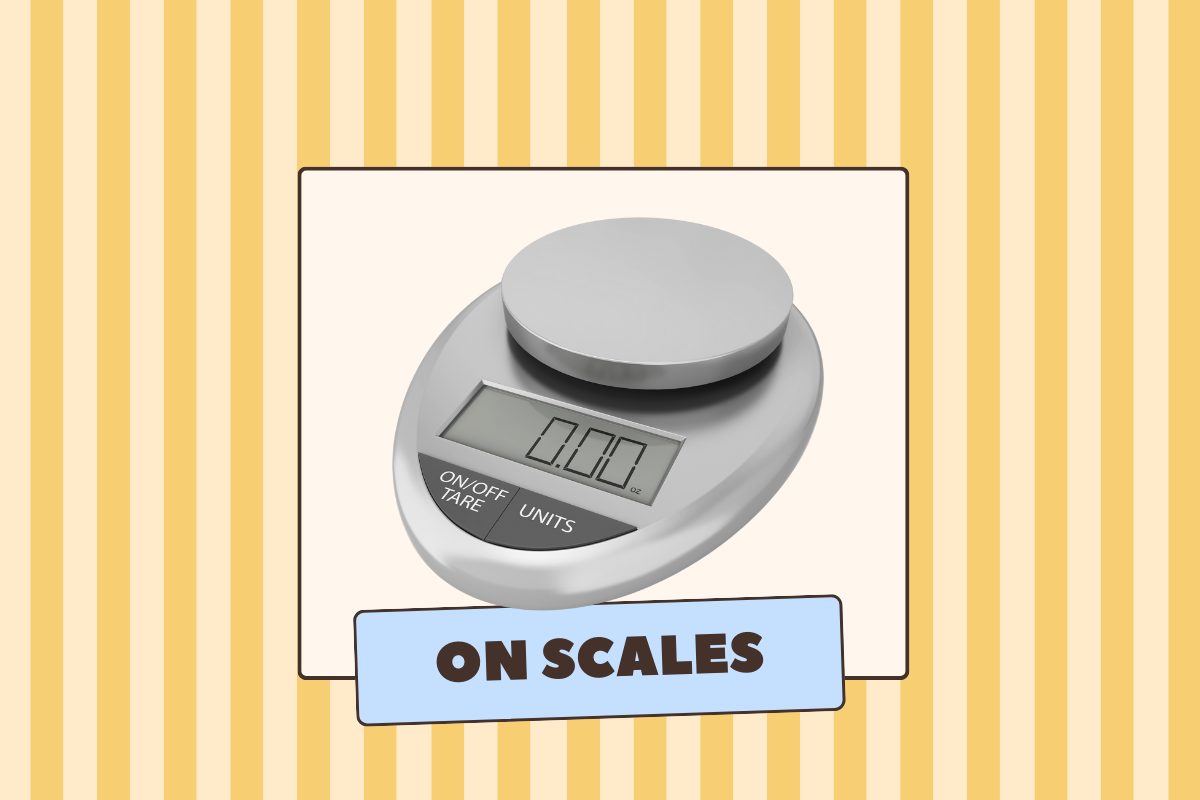On Scales: A Tool for Baking & Learning
Discover how this simple kitchen tool makes baking easier and transforms math from abstract to concrete.
My scale is one of my favorite kitchen tools. It’s nothing fancy—just a cheap, plastic, blue scale I first bought when I got into sourdough baking during the early days of the pandemic. As my hobby developed into a broader range of baking projects (and cookbook collecting), I noticed that almost all of my favorite cookbooks began with the same recommendation: get a scale. That felt like my teacher telling me, “you came to class prepared!” But beyond that validation, I truly love cooking with my scale.
I’m a pretty serious baker now, and I always use my scale. If I see a recipe without weights, I tend to trust it less. Weighted measurements mean consistency: 200 grams of sugar is exactly 200 grams of sugar. A cup of flour can vary wildly depending on how tightly it’s packed. But when I weigh it, I know I’m working with the same measurements the recipe was tested with. I promise, I’m not a perfectionist; but when I bake, I want to follow what the chef intended down to the gram.
When I started using scales, I also noticed that they are a powerful tool for kids in the kitchen. Before Nibblings, I taught elementary school, and math was my favorite subject to teach. This is the age when kids really start to build number sense—what it means to add and subtract, doubling, understanding place value, etc. A scale gives kids a hands-on, concrete way to see those concepts in action.
Imagine a recipe calls for 200g of flour, and your kid pours 210g into the bowl. Now they have to take some out. Maybe they take out too much and have to add a little back in. That’s addition, subtraction, trial and error—all in real time. Elementary school is when kids learn about pounds, grams, ounces, and capacities like gallons and liters. A kitchen scale makes that knowledge real.
There’s also estimation. You can guess how much something weighs before checking the number. And let’s not forget the practical bonus—using a scale often means fewer cups and spoons to wash later. Plus, kids love tools. Give a kid a calculator and they’ll press buttons endlessly; a scale works the same way. It’s simple enough to master quickly, but meaningful enough to feel grown-up.
Teaching and modeling how to use a scale
Start with an electric scale. They’re easiest to read and most common in kitchens.
Point out the tare button. Explain that it resets the scale to zero so you’re only weighing the ingredient—not the bowl or anything in the bowl. Place a bowl on the scale, tare, then add the ingredient. Remind your kid to tare each time they add a new ingredient.
Embrace mistakes. If they forget to tare before adding an ingredient, that’s a teachable moment! Work together to subtract the previous measurement and figure out how much they added
Talk about units. Scales often toggle between grams, ounces, and pounds. Even if you don’t know why “lb” means pound, you know what it means but your kid might not. These real-world connections reinforce what they see in math class.
Go deeper. Try doubling a recipe or making 1.5x the recipe and work through what happens to each measurement (hello, ratios!). Or compare: Is 200g of sugar more precise than 7oz? Why?





